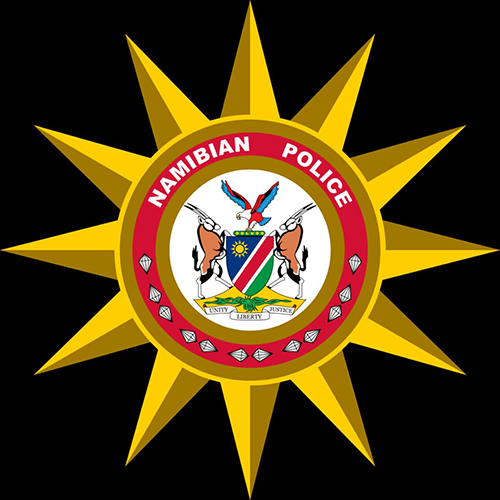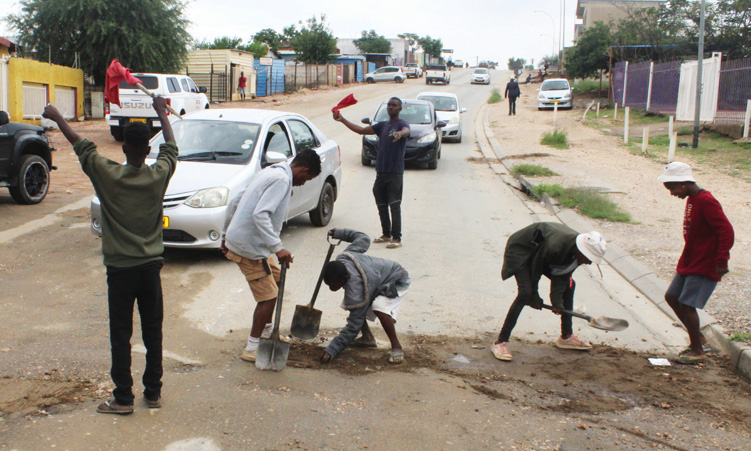LOGGERS moved into a small village west of Tsumkwe over the weekend and started felling large and valuable Zambezi teak trees.
San people in the area are shocked and upset by the wholesale onslaught on trees for which they feel responsible. By Sunday afternoon, 12 of the teak trees had already been chopped down and sawn into planks.The shocked residents of Nhoma village, who are about to proclaim their area as a conservancy, said they were never asked permission.The loggers, who reportedly work for Petrus Sipipa, came all the way from Rundu to chop down the trees.On Friday theycould not produce a permit.Their activities were put on hold until Sunday, when the loggers produced a permit issued by the forestry office at Tsumkwe, allowing them to chop down 100 Zambezi teak trees.The forestry office at Tsumkwe would not give any details when phoned yesterday, as the two officials in charge were out of the office, another official told The Namibian.The Namibian has however learnt that the permit was issued to Mr P Sipipa of Rundu, in his private capacity, although he brought in a whole team of loggers.According to a source, Sipipa allegedly did not even fill in the purpose for which he needed the teak wood, i.e.for firewood, woodcarvings or charcoal.”He just put in the words ‘for timber’ only, which does not explain anything,” the source said.The newspaper was unable to confirm when the permit was signed.According to a lodge owner at Tsumkwe, Estelle Oosthuysen, the residents of Nhoma told her they were not even asked if the trees could be chopped.”They are very upset and informed me that two weeks ago a forestry official came around to have a look at some trees, but did not say for which purpose.””There are tourists visiting Nhoma village on a daily basis and the noise of the chainsaws and the tracks left by the workers on Friday and Sunday to move the logs out of the forest are definitely not in favour of the fledgling tourism industry there,” Oosthuysen said yesterday.Oosthuysen further said that although the Nhoma area has not yet been declared a community forest – it is State land – the San people living there feel that the trees belong to them.”This goes especially for one of the oldest residents, G/aq’o.The wood fellers set up camp just 10 metres way from a village hut and are using water from the community tap without being given permission,” the lodge owner added.Ironically, Government is implementing a programme funded by the World Bank called the Indigenous People Development Plan (IDPD).The IPDP targets San people living within conservancies and community forests in Namibia.According to a brochure published by the Ministry of Environment and Tourism, the World Bank defines indigenous peoples “as a group with a social and cultural identity distinct from the dominant society that makes them vulnerable to being disadvantaged in the development process.”The IPDP must ensure that indigenous people benefit from development projects, and that potential adverse effects of development on indigenous peoples are avoided or mitigated.Another project, the Integrated Community-Based Ecosystem Management (ICEMA) project, supports activities within the larger framework of a national Community-Based Natural Resource Management (CBNRM) programme.The CBNRM Programme in Namibia is based on policy and a legal framework, which grants rights over wildlife and tourism management to communities once they are organised as conservancies.The Global Environmental Facility (GEF), through the World Bank as the GEF’s Implementing Agency, has provided a grant of about N$50 million for that purpose.However, neither programme covers vulnerable indigenous communities living in state forests or rural areas that are not proclaimed as conservancies.By Sunday afternoon, 12 of the teak trees had already been chopped down and sawn into planks.The shocked residents of Nhoma village, who are about to proclaim their area as a conservancy, said they were never asked permission.The loggers, who reportedly work for Petrus Sipipa, came all the way from Rundu to chop down the trees.On Friday theycould not produce a permit.Their activities were put on hold until Sunday, when the loggers produced a permit issued by the forestry office at Tsumkwe, allowing them to chop down 100 Zambezi teak trees. The forestry office at Tsumkwe would not give any details when phoned yesterday, as the two officials in charge were out of the office, another official told The Namibian.The Namibian has however learnt that the permit was issued to Mr P Sipipa of Rundu, in his private capacity, although he brought in a whole team of loggers.According to a source, Sipipa allegedly did not even fill in the purpose for which he needed the teak wood, i.e.for firewood, woodcarvings or charcoal.”He just put in the words ‘for timber’ only, which does not explain anything,” the source said.The newspaper was unable to confirm when the permit was signed.According to a lodge owner at Tsumkwe, Estelle Oosthuysen, the residents of Nhoma told her they were not even asked if the trees could be chopped.”They are very upset and informed me that two weeks ago a forestry official came around to have a look at some trees, but did not say for which purpose.””There are tourists visiting Nhoma village on a daily basis and the noise of the chainsaws and the tracks left by the workers on Friday and Sunday to move the logs out of the forest are definitely not in favour of the fledgling tourism industry there,” Oosthuysen said yesterday.Oosthuysen further said that although the Nhoma area has not yet been declared a community forest – it is State land – the San people living there feel that the trees belong to them.”This goes especially for one of the oldest residents, G/aq’o.The wood fellers set up camp just 10 metres way from a village hut and are using water from the community tap without being given permission,” the lodge owner added.Ironically, Government is implementing a programme funded by the World Bank called the Indigenous People Development Plan (IDPD).The IPDP targets San people living within conservancies and community forests in Namibia.According to a brochure published by the Ministry of Environment and Tourism, the World Bank defines indigenous peoples “as a group with a social and cultural identity distinct from the dominant society that makes them vulnerable to being disadvantaged in the development process.”The IPDP must ensure that indigenous people benefit from development projects, and that potential adverse effects of development on indigenous peoples are avoided or mitigated.Another project, the Integrated Community-Based Ecosystem Management (ICEMA) project, supports activities within the larger framework of a national Community-Based Natural Resource Management (CBNRM) programme.The CBNRM Programme in Namibia is based on policy and a legal framework, which grants rights over wildlife and tourism management to communities once they are organised as conservancies.The Global Environmental Facility (GEF), through the World Bank as the GEF’s Implementing Agency, has provided a grant of about N$50 million for that purpose.However, neither programme covers vulnerable indigenous communities living in state forests or rural areas that are not proclaimed as conservancies.
Stay informed with The Namibian – your source for credible journalism. Get in-depth reporting and opinions for
only N$85 a month. Invest in journalism, invest in democracy –
Subscribe Now!










